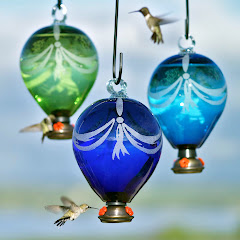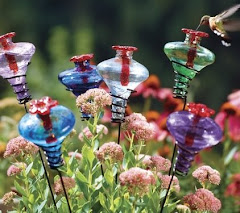- Know your zone. Many a gardener has been seduced by a plant's beauty regardless of the little plastic spike that warns against it. If the temperature in your area drops below zero, don't buy a plant that can only survive between 20-40 degrees. You'll just set yourself up for heartache. Despite the best intentions, big box stores often carry plants not suited to your region. Heed the information on the pot or label before buying your plants. Zone 5-8 is NOT the same as zone 3-8!
- Find out how big your plants will get. Everyone loves a full garden but overcrowding your space may choke out a plant you love with something else that spreads. Don't plan your garden for the first year, plan it for the fifth year of growth. You'll be sure to have plenty of room for your plants and some extra space to experiment with more plants in the future.
- Plant for all seasons. We all get excited about seeing those May flowers come in, but there are eleven more months in a year so use them all. Late summer and fall bloomers will keep your garden fresh looking while you enjoy outdoor activities. Also keep in mind winter interest, even dormant plants can look lovely in the snow.
- Vary the heights and colors of your plants to keep things visually interesting. Garden design is an expression of your personality so have fun with it. Whether a formal garden plan or a free-spirited mix of species "let your inner garden out"!
Thursday, August 28, 2008
Plants hummingbirds can't get enough of
Labor Day is upon us and what better way to spend the end of the summer season than in the garden? While planting your spring bulbs don't forget to fill out the rest of your yard with favorite hummingbird plants!
There's plenty of warmth and sunshine left before autumn's chilly weather so give your hummingbird plants a head start for next year by planting now. In fact, bushes and perennials planted now can increase their spring growth by up to 50% because they will have established root systems in place before the spring thaw! A few extra months can mean the difference in plants blooming the first spring or not.
Your local nursery or garden center can guide you to specific hummingbird plants that will thrive in your region. Many stores will group hummingbird attracting plants together or have special aisles and signage (look for a hummer silhouette on tags and labels). Knowing your soil type and drainage issues in your garden before buying will help immensely in picking plants well suited to your gardening needs.
Here are some proven winners we've found for hummingbird perennials:
In the Southeast: humidity makes for green, green gardens. Take advantage with the more tropical varieties of hummingbird flowers like the iconic red trumpetvine and hibiscus flowers. Climbing vines like bougainvilla are easily trained and come in bold vibrant colors like shocking pink and fiery fuscia.
In the Northeast: you'll need some hardier breeds like foxglove and bee balm, plants that can take a nor'easter and live to tell the tale. Bee balm is generally resistant to mildew so it proves versatile in summer and winter conditions.
In the West: where water-wise gardening is a must, nothing beats xeric agastache! Agastache is a durable and resistant plant that also happens to be downright gorgeous. These herb plants (called hummingbird mint) have spires of flowers that range from white to the most royal of purples and brilliant oranges and reds.
In the Southwest: use native plants like yucca and agave cactus to create dramatic textures without sending your water bill through the roof. Sages also do well in the high desert, and have wonderful fragrance as an added bonus to their beauty. Pineapple sage is our favorite, just for the fact it's fun to say!
As a reminder for planting perennials; these plants come back year after year so make sure you put them NOW where you'll want them LATER!
Subscribe to:
Posts (Atom)

Hummingbird in Napa, CA


